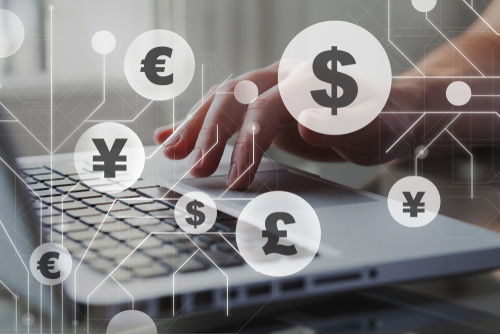Traveling or trading with foreign currencies require additional fees, which often include surcharges for credit cards, commissions, fees for ATM, and others. Whether you are travelling to a new country for a vacation or considering expanding your currency portfolio, it’s no surprise that financial institutions are looking for ways to increase their profit in the long run. After all, each of them is technically running a business.
If you are looking for a way to add more value to your money, there are ways on how you can find the best exchange rates almost effortlessly.
Here are some tips to remember:
1. Research the Exchange Rate Beforehand:
Exchange rates differ from country to country. There are countless online currency converters available, many of which come from reliable sources that are derived straight from the Forex market. If you are purchasing cash online via a mobile application, you may notice some additional charges that come with the conversion.
To get the most of your money, consider searching for various cash apps with affordable transaction fees and compare them with each other before ultimately deciding which works best for you.
2. Plan ahead:
For travelers who are visiting another foreign country, one of the best things you can do while preparing for the trip is to plan how much money you are going to need. After that, you can purchase your foreign currency ahead of time online instead of the last minute which usually requires costly delivery rates.
Purchasing ahead also gives you a chance to see whether or not your payment has come through and allows the business the chance to confirm your identity. Purchasing currency online also saves time spent standing in lines and can be done as quickly as possible.
3. Use Credit and ATM Cards:
ATMs abroad usually provide the best exchange rates when it comes to purchasing foreign currency which are usually 2-7% better compared to exchanging cash or traveler’s checks. During travel, it’s best to avoid using money exchange kiosks in public transportation areas and tourist spots.
4. Exchange Cash and Traveler’s Checks:
For people who may not want to use their cards for small purchases, exchanging cash and traveler’s checks is another way to find good exchange rates. However, be wary of exchanging them in tourist-filled areas like airports and train stations. Consider checking in banks and post offices. To get a proper exchange rate, read the postage rates very carefully and ask for the net rate that comes after commissions. It’s important to remember that commissions work in two ways:
- The commission that takes per percentage.
- The commission that is charged per item and transaction.
To lure tourists, certain money changes that are not at banks or post offices will post the sell rate for the currency rather than the buy rate, which means you might be buying more than what you intend to spend. These money changers may also offer great rates exclusively for traveler’s checks or very large sums of money which can be dangerous to hand carry around.
As an added precaution, be wary of exchanges in the black market which often include scams and counterfeit currency.
5. Watch out for hidden charges:
Some companies may offer deals that advertise how much money you can save if you choose a specific delivery option, which actually includes extra hidden charges. To be safe, find out how much you are paying in total and exactly how much currency you will receive, changes with great exchange rates can be negated by commissions and handling fees.
6. Read the fine print:
There are various apps and sites out there advertising the fact that they do not include transaction fees, delivery fees, and commissions. While this is very tempting, the last thing you want to do is to purchase a large sum of currencies only to realize that there are certain limitations and deductions. As much as possible read the fine print in the site’s terms of use. You can also call the company and ask some questions they may not address in their website.
Conclusion:
Dealing with foreign currency doesn’t have to be a hassle. As a currency trader or a traveller, one of the most important things you can do is actively research on a reliable business that stays close to the exchange rate without adding in extra hidden charges. While it may be time-consuming at first, learning to add value to your purchases is simply an investment you can’t avoid.
Read Also:























